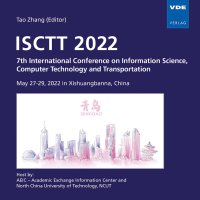Measuring and Modeling the Influences of Street Tree Species on Microclimate and Pedestrian Comfort
Konferenz: ISCTT 2022 - 7th International Conference on Information Science, Computer Technology and Transportation
27.05.2022 - 29.05.2022 in Xishuangbanna, China
Tagungsband: ISCTT 2022
Seiten: 6Sprache: EnglischTyp: PDF
Autoren:
Li, Yingnan (Department of Environmental Design, School of Arts, Jiangsu University, Zhenjiang, China & Department of Environmental Planning Institute, Seoul National University, Seoul, South Korea)
Song, Zipeng; Liu, Tao; Cheng, Kai (Department of Environmental Design, School of Arts, Jiangsu University, Zhenjiang, China)
Ding, Lu (Department of Computer Graphics Technology, Purdue University, West Lafayette, USA)
Zhou, Zhengzhong (Institute of Urban and Rural Mining, Changzhou University, Changzhou, China & Zhenjiang Puyuan Ecological Technology Co. Ltd., Zhenjiang, China)
Inhalt:
Street trees are important components of urban green spaces, and their ecosystem services improve the urban thermal environment. The shade from the tree cover can create a more comfortable pedestrian space in a city with hot summer. In addition, urban microclimate analyses are becoming more and more to address the planning decision process to create liveable and healthy public spaces. However, the specific relationship between street tree species and microclimate has not been sufficiently studied in diverse urban settings. Therefore, this study took two typical "three boards and four belts" type streets in Nanjing as a study site. The research objective is to investigate how the street tree species affect microclimate and pedestrian comfort. We analyzed the microclimate variations by on-site meteorological measurement. Furthermore, the ENVI-met model was used to analyze the optimal strategies for improving the thermal environment. The human thermal comfort was evaluated by Universal Thermal Climate Index (UTCI), which can be calculated in the model. The results revealed: the microclimate in the streets planted with deciduous trees can create a better thermal environment than conifers. Street trees performed differently by influencing the thermal environment in streets in different directions. Over-dense tree canopy may reduce the vertical air circulation, which leads to the heated air block in the pedestrian spaces. The findings of this study showed great opportunities for supporting decision-makers in improving the urban thermal environment through street greenery.


